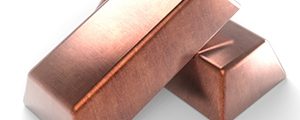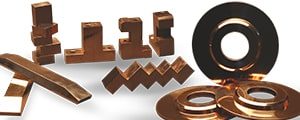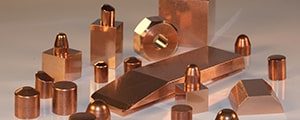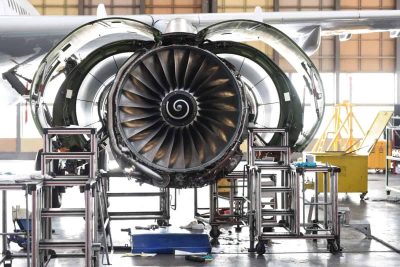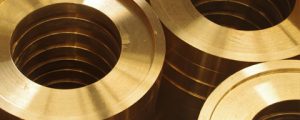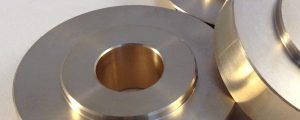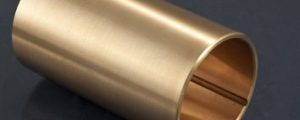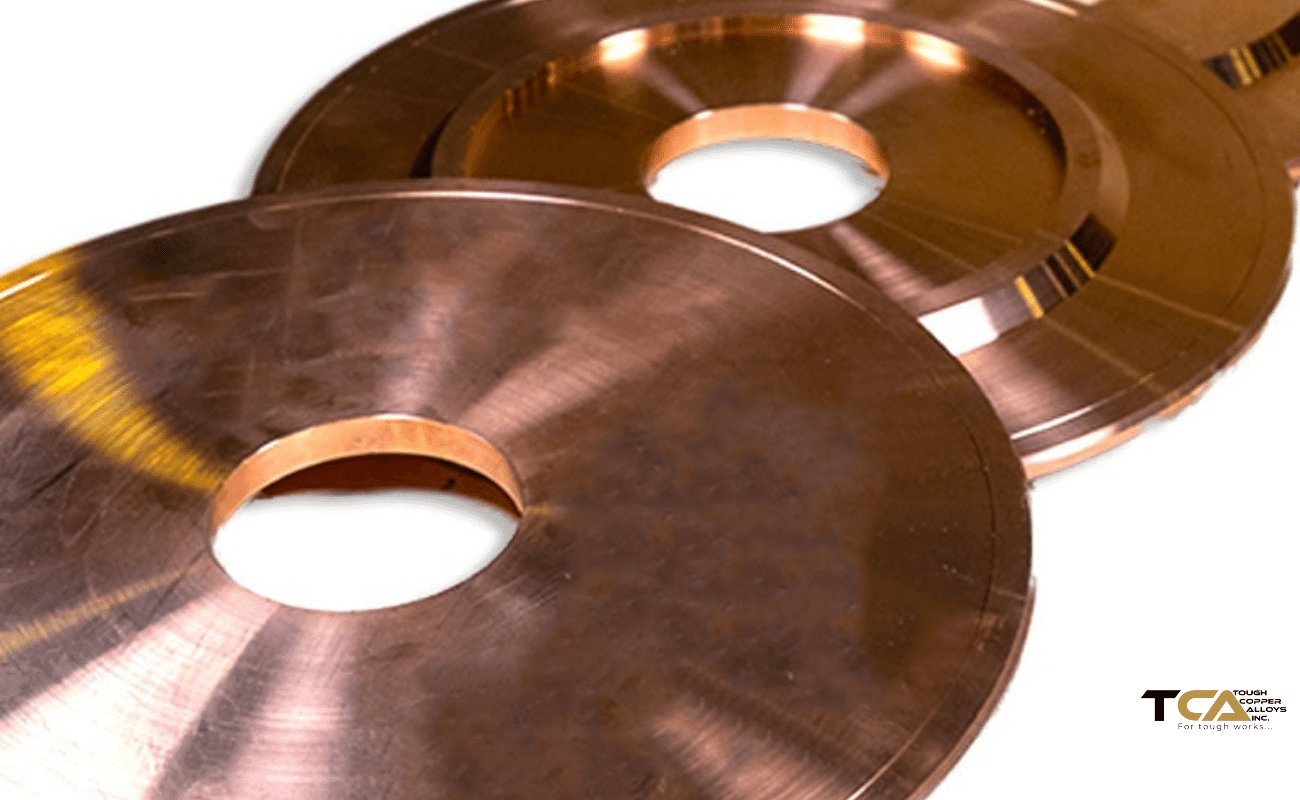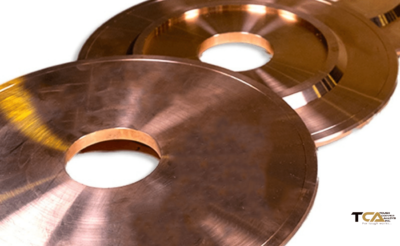What is “C15000” Material?
C15000 is a copper-zirconium alloy that offers high strength and excellent corrosion resistance, making it a popular choice in a variety of applications. This alloy is also known as Zirconium Copper and is composed of 1.5% zirconium and 0.05% to 0.15% copper.
The addition of zirconium to copper gives C15000 superior mechanical properties, including high strength, hardness, and wear resistance. These properties make it ideal for use in applications that require high stress and wear resistance, such as welding electrodes, electrical connectors, and molds for plastic injection.
C15000 also offers excellent corrosion resistance, particularly in seawater and other harsh environments. This makes it a suitable material for marine and offshore applications, as well as for use in the chemical processing and petrochemical industries.
In addition to its mechanical and corrosion-resistant properties, Cupro Z is also an excellent electrical conductor, making it ideal for use in electrical and electronic applications. It also offers good thermal conductivity, which makes it suitable for use in heat exchangers and other thermal management applications.
Overall, C15000 is a versatile and reliable material that offers a range of desirable properties for various industrial applications. If you’re looking for a high-strength, corrosion-resistant material that also offers good electrical and thermal conductivity, Cupro Z may be the right choice for your needs.
Application Areas & Industries
C15000 is a copper-zirconium material with high thermal and electrical conductivity, making it a popular choice in various industries. Here are some of the application areas and industries where C15000 is commonly used:
Electrical Industry: C15000 is widely used in the electrical industry due to its excellent electrical conductivity and thermal stability. It’s often used in applications such as switches, connectors, and terminals.
Automotive Industry: The automotive industry relies on materials that are durable and can withstand harsh conditions. Cupro Z’s high strength and resistance to wear and tear make it an ideal material for use in components such as bearings, valve guides, and piston rings.
Aerospace Industry: The aerospace industry requires materials that can withstand high temperatures and extreme environments, which is why C15000 is often used in components such as heat exchangers, fasteners, and bearings.
Manufacturing Industry: Cupro Z’s excellent machinability and thermal conductivity make it a popular choice in the manufacturing industry for use in tools, molds, and dies.
Defense Industry: C15000’s high strength and resistance to corrosion make it an ideal material for use in the defense industry for applications such as armor plating, missile components, and munitions.
In summary, Cupro Z is a versatile material that finds application in a wide range of industries due to its high thermal and electrical conductivity, strength, and resistance to wear and tear. Its unique properties make it an excellent choice for applications that require durability and high performance.
Common Fabrication Processes of “C15000”
C15000 is a high-strength copper-nickel material that is used in a wide range of industrial applications. To achieve its desired properties, C15000 often undergoes various fabrication processes. Here are some of the common processes used to fabricate C15000:
- Machining: C15000 is a machinable material that can be easily shaped and formed into different parts using various cutting tools. Machining is a common process used to fabricate C15000 into components such as valves, pumps, and fittings.
- Welding: Cupro Z can be welded using different welding techniques such as gas tungsten arc welding (GTAW) and gas metal arc welding (GMAW). Welding is a common process used to join C15000 components together to form complex assemblies.
- Forming: C15000 can be formed into different shapes using various techniques such as forging, bending, and stamping. Forming is a common process used to produce C15000 components such as fasteners, springs, and clips.
- Heat Treatment: Cupro Z can be heat-treated to improve its strength, ductility, and toughness. Common heat treatment processes include annealing, quenching, and tempering.
- Electroplating: C15000 can be electroplated with different metals such as nickel, chrome, and gold to enhance its surface properties such as corrosion resistance, wear resistance, and appearance.
In summary, C15000 can undergo various fabrication processes to achieve its desired properties for different industrial applications. Machining, welding, forming, heat treatment, and electroplating are some of the common processes used to fabricate C15000 components into complex assemblies. Contact us today to learn more about how C15000 can be fabricated to meet your specific needs.
Chemical Composition
Cupro Z is a copper-zirconium material that is commonly used in various industries due to its excellent mechanical and electrical properties. Its chemical composition is carefully balanced to ensure it provides optimal performance in a range of applications. Here is the chemical composition of C15000:
| Element | Composition (%) |
|---|---|
| Copper | 97.0 – 99.0 |
| Zirconium | 0.02 – 0.15 |
| Iron | 0.05 max |
| Nickel | 0.05 max |
| Lead | 0.05 max |
| Phosphorus | 0.015 – 0.040 |
| Total Impurities | 0.50 max |
As you can see, C15000 is primarily composed of copper, with zirconium as the main alloying element. The addition of zirconium gives C15000 its unique properties such as high strength, excellent conductivity, and resistance to stress relaxation.
In addition to copper and zirconium, C15000 may also contain small amounts of iron, nickel, lead, and phosphorus as impurities. These impurities are carefully controlled to ensure they do not negatively impact the material’s performance.
In summary, the chemical composition of C15000 is carefully balanced to ensure it provides optimal mechanical and electrical properties. Its high copper content, along with the addition of zirconium and controlled impurities, makes it an excellent choice for a range of applications.
Physical Features
C15000 is a high-strength copper-zirconium alloy that possesses several unique physical properties. Understanding these properties is important when selecting a material for your application. Here are some of the key physical properties of C15000:
Density: Cupro Z has a density of 8.89 g/cm³, which is slightly higher than pure copper.
Melting Point: The melting point of C15000 is around 1000°C, making it suitable for use in high-temperature applications.
Thermal Conductivity: C15000 has excellent thermal conductivity, with a thermal conductivity value of approximately 200 W/mK. This property makes it a great choice for use in heat exchangers and other applications that require efficient heat transfer.
Electrical Conductivity: C15000 also has excellent electrical conductivity, with a value of around 80% IACS (International Annealed Copper Standard). This property makes it a great choice for use in electrical and electronic applications.
Magnetic Permeability: Cupro Z has a low magnetic permeability, which makes it a great choice for use in applications where magnetic interference needs to be minimized.
In summary, C15000 is a high-strength copper-zirconium alloy with excellent thermal and electrical conductivity, low magnetic permeability, and a high melting point. These unique physical properties make it an ideal material for use in a variety of applications across multiple industries.
Fabrication Properties of “C15000”
C15000 is a copper-zirconium alloy with excellent fabrication properties, making it a popular choice for various applications. Here are some of the key fabrication properties of C15000:
Machinability: C15000 is easy to machine due to its low lead content and fine-grained structure. It can be machined using conventional methods such as drilling, turning, and milling.
Formability: C15000 can be easily formed into various shapes using bending, drawing, and other forming processes. Its high ductility and malleability allow it to be shaped without cracking or breaking.
Weldability: C15000 can be welded using various methods such as gas tungsten arc welding (GTAW), gas metal arc welding (GMAW), and resistance welding. It is important to note that proper welding procedures should be followed to avoid cracking or porosity.
Solderability: C15000 exhibits excellent solderability due to its low oxygen content and clean surface. It can be easily soldered using various soldering methods such as wave soldering, reflow soldering, and hand soldering.
Brazing: C15000 can be brazed using various brazing methods such as furnace brazing, torch brazing, and induction brazing. It is important to use a brazing filler metal that is compatible with C15000 to ensure good joint strength and integrity.
In summary, C15000 exhibits excellent fabrication properties, including machinability, formability, weldability, solderability, and brazability. These properties make it a popular choice for various applications where ease of fabrication is important.
Applicable Specifications
C15000 is a high-strength copper-nickel-zinc alloy with excellent corrosion resistance and good machinability. It is commonly used in various industrial applications, including aerospace, marine, and electronics. When selecting C15000 for a specific application, it’s essential to consider the applicable specifications to ensure that the material meets the required standards.
The following are some of the applicable specifications for C15000:
ASTM B301: This specification covers seamless copper-nickel-zinc alloy pipe and tube for pressure applications.
ASTM B422: This specification covers copper-nickel-zinc alloy plate, sheet, strip, and rolled bar.
ASTM B465: This specification covers copper-iron alloy rod, bar, and shapes.
MIL-C-24679: This military specification covers copper-nickel-zinc alloy plate, sheet, and strip.
QQ-N-286: This federal specification covers copper-nickel-zinc alloy plate, sheet, strip, and rolled bar.
AMS 4640: This aerospace material specification covers copper-nickel alloy rod, bar, wire, and forgings.
By considering these applicable specifications, you can ensure that the C15000 material you use is suitable for your application and meets the required standards. It’s always essential to consult with a knowledgeable supplier to determine the best material and specification for your needs.
Thermal Properties
C15000 is a copper-zirconium material that exhibits excellent thermal conductivity and stability. It is a popular choice for applications that require materials with high thermal conductivity and resistance to thermal fatigue. Here are some of the thermal properties of C15000:
- Thermal Conductivity: C15000 has a thermal conductivity of around 220 W/mK at room temperature. This makes it an excellent conductor of heat and ideal for use in applications such as heat exchangers, thermal management systems, and electrical conductors.
- Thermal Expansion: C15000 has a low coefficient of thermal expansion, which means it is less likely to deform or crack when exposed to temperature changes. Its coefficient of thermal expansion is around 17.7 x 10^-6/°C at room temperature.
- Melting Point: Cupro Z has a relatively high melting point of around 1093°C. This makes it ideal for use in high-temperature applications such as furnace components, electrical contacts, and welding electrodes.
- Thermal Fatigue Resistance: C15000 exhibits excellent resistance to thermal fatigue, which is the ability of a material to withstand repeated heating and cooling cycles without deformation or damage. This property makes it a popular choice for use in applications such as heat exchangers, where the material is subjected to extreme temperature variations.
In summary, C15000 is a material that exhibits excellent thermal conductivity, low coefficient of thermal expansion, high melting point, and resistance to thermal fatigue. These properties make it a popular choice for a variety of high-temperature applications across industries such as electronics, aerospace, and manufacturing.
Typical Uses of “C15000”
C15000 is a high-strength copper-zirconium material that is often chosen for its unique combination of strength, hardness, and thermal conductivity. Its properties make it ideal for use in various industries, and it has a wide range of typical uses. Here are some of the most common applications of C15000:
- Electrical Industry: C15000 is an excellent choice for use in electrical conductors, bus bars, and switchgear components. Its high conductivity, thermal stability, and corrosion resistance make it ideal for these applications.
- Aerospace Industry: The aerospace industry requires materials that can withstand high-stress environments and extreme temperatures, which is why Cupro Z is a popular choice. It is often used in components such as heat exchangers, engine components, and landing gear.
- Automotive Industry: The automotive industry relies heavily on materials that are durable and can withstand wear and tear. C15000’s high strength and wear resistance make it ideal for use in components such as valve guides, camshafts, and crankshafts.
- Oil and Gas Industry: Cupro Z is commonly used in the oil and gas industry for applications such as drill collars, valves, and pump components. Its excellent corrosion resistance and strength make it ideal for use in harsh environments.
- Manufacturing Industry: C15000’s excellent machinability and thermal conductivity make it a popular choice for use in manufacturing tools, molds, and dies.
- Defense Industry: C15000 is often used in the defense industry for applications such as armor plating and bullet casings. Its high strength and hardness make it an ideal material for these applications.
In summary, C15000 is a versatile material that finds applications in various industries due to its unique properties. Its high strength, wear resistance, thermal stability, and corrosion resistance make it an excellent choice for a wide range of applications.
Equivalents
C15000 is a high copper content alloy with excellent electrical and thermal conductivity, as well as high strength and corrosion resistance. However, in some cases, an equivalent alloy may be needed due to availability or other reasons. Here are some of the equivalents of C15000:
C15715: This alloy has a higher level of zinc than C15000 and is used in applications requiring high strength and electrical conductivity, such as electrical connectors and conductors.
C16200: This alloy has a lower copper content than C15000, but a higher level of nickel, iron, and silicon, making it more suitable for applications requiring higher strength and toughness.
C17000: This alloy has a higher copper content than C15000, but with lower levels of iron and nickel, giving it improved electrical and thermal conductivity. It’s commonly used in electrical applications such as conductors, switches, and connectors.
C17500: This alloy contains a higher amount of beryllium and is used in applications requiring high strength, hardness, and thermal conductivity.
C18010: This alloy has a higher level of iron than C15000, giving it improved strength and wear resistance. It’s commonly used in bearings and bushings.
When considering the use of an equivalent alloy, it’s important to ensure that it meets the specific requirements of the application. Consulting with a materials engineer or supplier is recommended to determine the most suitable alloy for the intended use.
In conclusion, while C15000 is a versatile alloy, there are several equivalents available with slightly different properties. The selection of an equivalent alloy will depend on the specific requirements of the application, and it’s important to consult with an expert before making a decision.

